The global dropshipping market is projected to reach $476.1 billion by 2026, growing at a compound annual growth rate (CAGR) of 28.8%. Dropshipping is becoming an increasingly popular business model in e-commerce. In this guide, we cover:
- What dropshipping is and how it works
- The legal and legitimate aspects of dropshipping
- The benefits and potential drawbacks of dropshipping
- Current trends and the viability of dropshipping in 2025
- Steps to start your dropshipping business
- How to find winning products
- Managing orders and fulfillment
- Common pitfalls and how to avoid them
- Frequently asked questions about dropshipping
Before exploring all the details about dropshipping, you may want to review the most important dropshipping statistics that will help you understand its current position in the market.
What is Dropshipping?
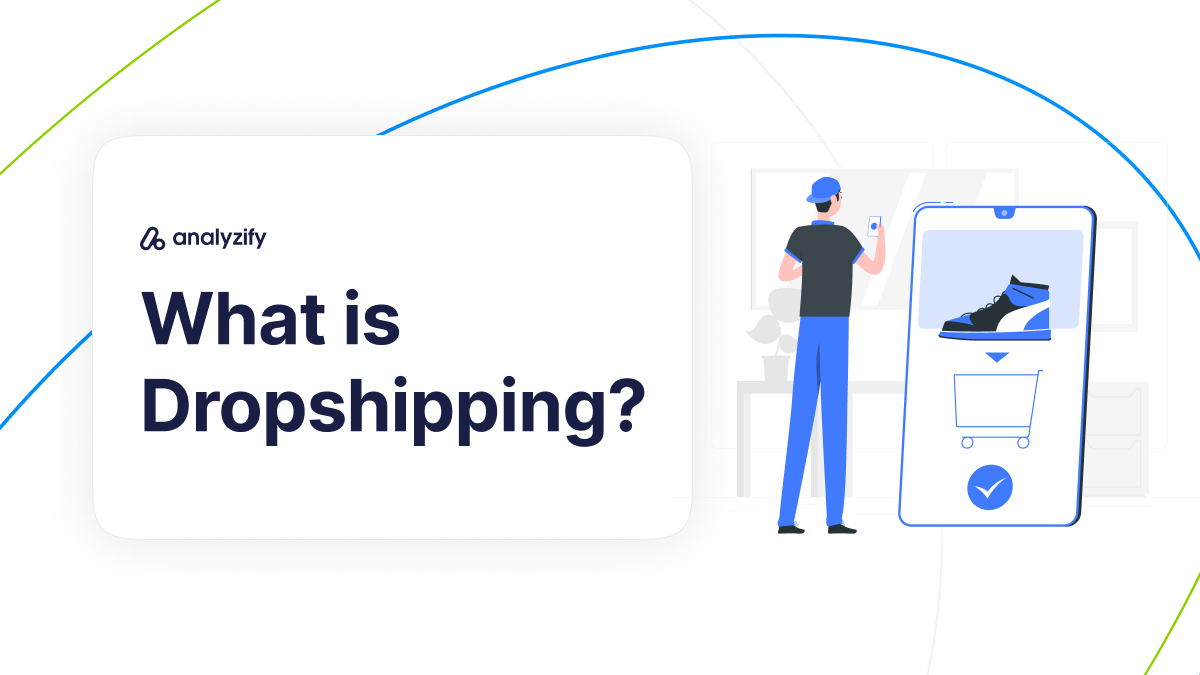
Let’s begin with the basics. What exactly is dropshipping, and how does it work?
Dropshipping is a retail fulfillment method where a store doesn’t keep the products it sells in stock. Instead, when a store sells a product, it purchases the item from a third party and has it shipped directly to the customer. As a result, the merchant never sees or handles the product.
Here’s a step-by-step breakdown of the dropshipping process:
You set up an online store and list products for sale.
A customer visits your store and places an order.
You forward that order to your supplier.
The supplier ships the product directly to your customer.
You retain the profit, which is the difference between the retail price you charged and the wholesale price you paid to the supplier.
The main advantage of this model is that you don’t need to handle inventory or manage shipping logistics. It’s like operating a store without the complexities of traditional inventory management.
Legal and Legitimate Aspects of Dropshipping
You might be thinking, “This sounds too good to be true. Is it even legal?”
The answer is yes, dropshipping is perfectly legal and a legitimate way to run an online business. However, there are a few important points to keep in mind:
Legitimate Suppliers: Make sure you’re working with reputable suppliers. Avoid those who sell counterfeit or unlicensed products. Using trusted suppliers helps you avoid legal troubles and ensures customer satisfaction.
Seller’s Permits and Business Licenses: In most places, you’ll need a seller’s permit to legally sell products and charge sales tax. Additionally, some regions require a business license. Check with your local government to understand the requirements.
Consumer Protection Laws: Be aware of consumer protection laws in your target market. These laws cover things like return policies, product warranties, and advertising standards. Complying with these laws not only keeps you out of legal hot water but also builds trust with your customers.
Benefits of Dropshipping
Dropshipping offers several advantages that make it an attractive business model, especially for new entrepreneurs:
Low Startup Costs: Since you don’t need to buy inventory upfront, your initial investment is much lower than traditional retail models.
Reduced Risk: You’re not stuck with unsold inventory, and you can easily test different products to see what sells best.
Flexibility and Scalability: You can run your dropshipping business from anywhere and scale it without the logistical headaches of managing stock.
Potential Drawbacks of Dropshipping
While dropshipping has many perks, it’s not without its challenges:
Lower Margins: Because you’re not buying in bulk, your profit margins can be thinner compared to traditional retail.
Supplier Reliability: You’re dependent on your suppliers for inventory and shipping. If they mess up, it reflects poorly on your business.
Competitive Market: The barrier to entry is low, which means there are many dropshipping businesses out there. Standing out requires smart marketing and excellent customer service.
In a nutshell, dropshipping is a straightforward and legal business model that can be very rewarding if done right. By understanding the basic concepts and legal aspects, you’re already ahead of many who jump in without doing their homework.
Is Dropshipping Still a Good Business in 2025?
You might be wondering, “Isn’t the market saturated?” or “Can I still make money with dropshipping?” These are valid concerns, and we’re here to break it all down for you.
It’s true, the days of easily making a quick buck with minimal effort are over. However, this doesn’t mean the opportunity is gone—it just means the game has changed.
Let’s start with the basics. Dropshipping allows you to sell products without holding any inventory. When a customer places an order, you purchase the item from a third-party supplier who then ships it directly to the customer.
This model eliminates the need for large upfront investments in stock, making it an attractive option for new entrepreneurs.
The Current State of Dropshipping
In 2025, the e-commerce market is bigger than ever. Online shopping has become the norm, with more people choosing to buy everything from groceries to gadgets online.
This shift has opened up countless opportunities for dropshipping businesses to thrive. However, success in dropshipping now requires a strategic approach.
Key Trends and Changes
Increased Competition: Yes, there’s more competition. But this is not necessarily a bad thing. It means the market is validated, and people are successfully making money. The key is to differentiate yourself and find your niche.
Customer Expectations: Modern consumers expect fast shipping, high-quality products, and excellent customer service. Meeting these expectations is crucial for your dropshipping business to succeed.
Marketing and Branding: Gone are the days of relying solely on generic products. Building a strong brand and using effective marketing strategies are more important than ever.
Why Dropshipping Still Works
Low Barrier to Entry: Starting a dropshipping business requires less capital than traditional retail models. You can test multiple products without significant financial risk.
Flexibility: Dropshipping allows you to run your business from anywhere with an internet connection. This flexibility makes it an attractive option for those looking to escape the traditional 9-to-5 grind.
Scalability: As your business grows, you can scale without worrying about inventory management and warehousing, which are handled by your suppliers.
The Bottom Line
Yes, dropshipping is still viable in 2025, but it requires a modern approach. Success hinges on finding the right products, providing exceptional customer service, and effectively marketing your brand.
It’s no longer a get-rich-quick scheme but a legitimate business model that, with the right strategy, can be highly profitable.
Are you ready to explore the world of dropshipping? Let’s see how you can get started and thrive in this market.
How to Start Dropshipping?

Starting your dropshipping business might seem like a daunting task, but with the right steps, you can set up your store and start selling in no time.
Let’s walk through the process, from setting up your store to connecting with suppliers, and get you on your way to dropshipping success.
Steps to Begin Your Dropshipping Journey
Choose Your Niche: Selecting a niche helps you focus your marketing efforts and attract a specific audience. The more specific your niche, the easier it is to stand out in a crowded market.Consider your interests and passions. Look for niches with steady demand and low competition. Tools like Google Trends and keyword research can help you gauge the popularity of different niches.
Research Products: Use product research tools to discover trending products. Look for items that solve problems, have good profit margins, and are not overly saturated.Use Google Trends, Amazon bestsellers, and competitor analysis to ensure there’s a market for your products.
Create Your Online Store: Shopify is a popular choice for dropshipping due to its user-friendly interface and robust app ecosystem.Sign up for your chosen platform, choose a plan, and follow the setup prompts. Customize your store’s design to reflect your brand identity. Shopify offers various themes to get you started.
Connect a Fulfillment App: Fulfillment apps streamline the process of importing products, managing orders, and connecting with suppliers. AutoDS, Zendrop and Spocket are excellent choices for beginners. These apps allow you to easily import products into your store and automate order fulfillment.
Add Products to Your Store: Write compelling product descriptions that highlight the benefits and features. Use high-quality images and videos to showcase your products.Ensure your pricing covers costs and leaves room for profit. A common strategy is to price products at least 2.5 times their cost.
Design Your Store: Create a clean, professional homepage that welcomes visitors and showcases your top products. Highlight any promotions or unique selling points.Optimize your product pages with clear, detailed descriptions, high-quality images, and customer reviews. Ensure the buying process is smooth and intuitive.
Set Up Payment Processing: Shopify Payments, PayPal, and Stripe are popular payment gateways that are easy to set up.Ensure your payment gateway is secure to build trust with your customers.
Launch Your Store: Before going live, test your store thoroughly. Make sure the checkout process works smoothly, links are functional, and your site looks good on both desktop and mobile devices.Once you’re confident everything is in place, publish your store and start promoting it.
We have compiled a comprehensive list of the best Shopify dropshipping apps, comparing their features, usability, and pricing.
Explore the detailed comparisons to find the app that best suits your business needs and enhances your dropshipping experience.
How to Find Winning Products for Dropshipping?
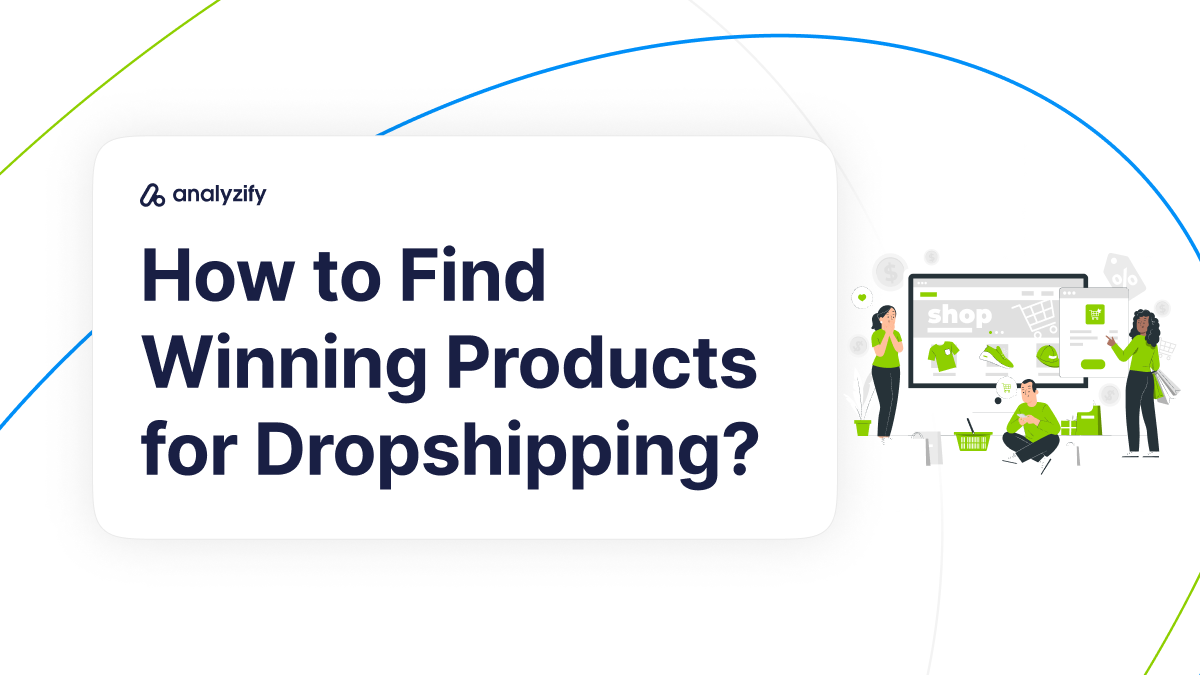
Finding winning products is crucial for the success of your dropshipping business. Let’s see the process of identifying and selecting products that will captivate your customers and drive sales.
Criteria for Selecting Products for Dropshipping
Solves a Problem
Products that address specific needs or problems are more likely to attract customers. People are always looking for solutions to their everyday issues.
- Example: Think of a posture corrector for people with back pain. This product solves a common problem and can be marketed effectively to a target audience seeking relief from discomfort.
High Demand
High-demand products are those that many people are looking to buy. Ensuring there’s a consistent interest in your product helps secure a steady stream of sales.
- Example: Use Google Trends to check the popularity of reusable water bottles. If the trend shows an upward curve, it’s a good indicator of growing demand.
Good Profit Margins
Your product should be priced in a way that covers all costs and leaves room for profit. A good rule of thumb is to mark up your products at least 2.5 times their cost.
- Example: If you buy a product for $10, you should sell it for at least $25 to ensure a healthy profit margin after accounting for marketing, shipping, and other expenses.
Low Competition
Entering a market with low competition gives you a better chance to stand out and capture customer interest. High competition markets can be tough, especially for beginners.
- Example: Instead of selling generic phone cases, which are highly competitive, consider niche products like phone cases with built-in sanitizers, which might have fewer sellers.
Lightweight and Easy to Ship
Lightweight and compact products are cheaper to ship, reducing costs and improving customer satisfaction with faster delivery times.
- Example: Items like jewelry, phone accessories, or fitness bands are lightweight and can be shipped economically.
Appealing and Unique
Products that are visually appealing or have unique features can attract more attention and encourage impulse buys.
- Example: A laptop stand that not only supports the device but also has built-in cooling fans and USB ports combines functionality with unique features.
Validation Process
Before fully committing to a product, it’s crucial to validate its potential:
- Test Orders Place a test order to experience the shipping time and product quality firsthand. This step ensures that the product meets your standards and your customers will have a good experience.
- Feedback Loop Create a small batch of ads or organic posts to gauge interest and collect feedback. This helps you understand if there is a genuine interest in your product.
- Monitor Performance
Track the engagement and sales data from your initial campaigns. Use this information to decide whether to scale up your efforts or pivot to a different approach if necessary.
How to Conduct a Product Research for Dropshipping
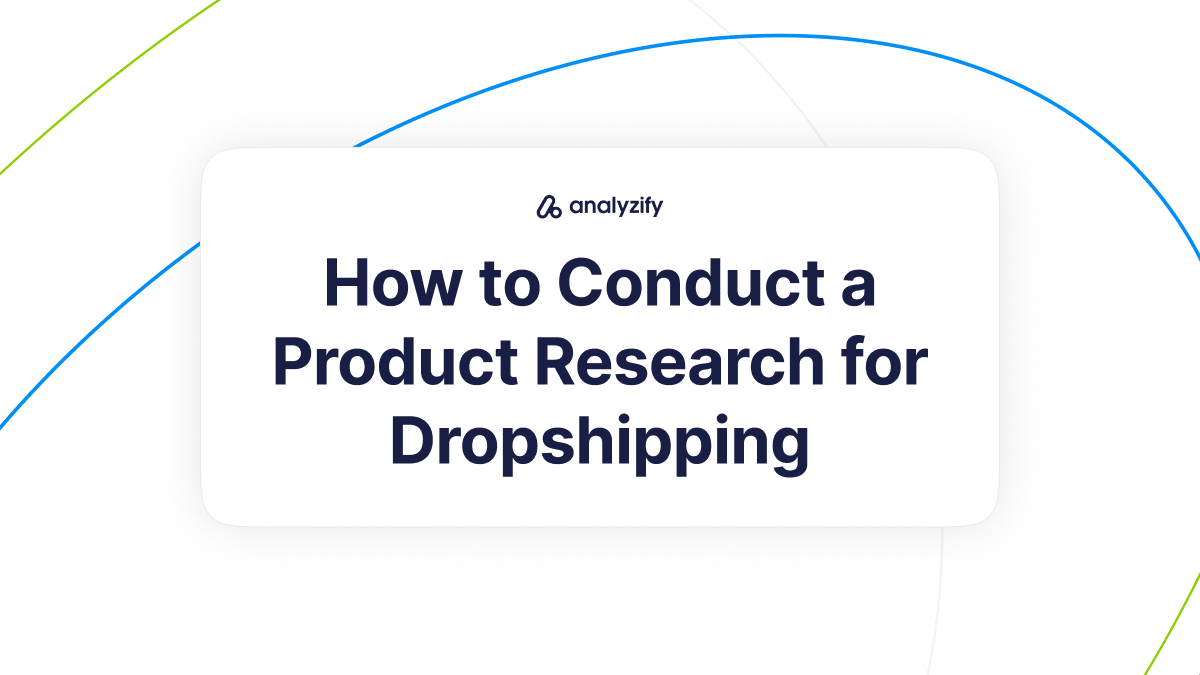
Ever wondered why some dropshipping stores seem to hit gold with their products while others struggle to make sales?
The secret lies in effective product research. Here are the strategies that can help you explore the gems that will set your store apart.
Use Product Research Tools
Using specialized tools can significantly streamline your product research process, giving you access to trending items and valuable insights.
Here are a few popular tools to get you started, but remember, there are many others out there, so feel free to explore and find what works best for you.
- AutoDS AutoDS provides a comprehensive marketplace with tools to identify trending products. It offers features like the marketplace, winning products, and TikTok spy features to help you find what’s hot.
- Zendrop Zendrop is another excellent tool that offers a wide range of products and insights into what’s popular. It integrates seamlessly with Shopify, making it easy to import products and manage your inventory.
- Spocket Spocket focuses on high-quality products from suppliers based in the US and EU. This can help you offer faster shipping times and better product quality, which are crucial for customer satisfaction.
Analyze Competitors
Want to know what’s already working in the market? Competitor analysis is your best friend.
- Study Successful Stores Look at established dropshipping stores to see what products they are selling and how they market them. Analyze their product listings, pricing strategies, and customer reviews. Example: If a competitor’s product has a lot of positive reviews, it indicates high demand. Conversely, numerous complaints might signal quality issues that you can avoid.
- Use Tools for Competitive Analysis Tools like SimilarWeb can help you analyze your competitors’ traffic and estimate their sales. This information can guide your product selection and marketing strategies. Example: If you notice a competitor getting significant traffic for a particular product, consider testing a similar item in your store.
Google Trends and Keyword Research
Understanding what people are searching for can give you a huge advantage. Google Trends and keyword research tools can help you spot emerging trends and popular products.
Track Product Interest: Use Google Trends to monitor how interest in a product changes over time. This can help you identify seasonal trends and evergreen products.
Example: If searches for “reusable water bottles” peak during certain times of the year, you can plan your marketing campaigns accordingly.
Keyword Research Tools: Tools like Ahrefs and SEMrush can help you understand what potential customers are searching for. Use this data to tailor your product offerings and marketing strategies.
Example: If you find that “eco-friendly cleaning products” have high search volume, it’s a good indicator of market demand.
Social Media and Marketplaces
Social media and online marketplaces are treasure troves of information on trending products and consumer preferences.
- Discover Trends on Social Media: Platforms like Instagram, TikTok, and Pinterest are goldmines for discovering trending products. Follow influencers and popular hashtags to stay updated on the latest trends.
Example: A product that frequently appears in viral TikTok videos is likely to be in demand. Check the number of likes, shares, and comments to gauge its popularity.
- Analyze Marketplaces: Browse Amazon and eBay for best-selling items. These platforms offer insights into what products are currently popular and in demand.
Example: Check the best sellers and customer reviews on Amazon to identify potential winning products for your store.
Customer Reviews and Feedback
Listening to what customers have to say can provide invaluable insights into product performance and areas for improvement.
- Leverage Customer Insights: Reviews provide valuable insights into what people like and dislike about a product. Use this feedback to improve your product offerings and avoid common pitfalls.
Example: If many reviews praise a product’s durability but criticize its packaging, highlight the durability in your marketing and consider offering better packaging solutions.
- Engage with Customers: Engage with your customers to gather direct feedback. Use surveys, social media polls, and email newsletters to understand their needs and preferences.
Example: Ask your customers what new products they’d like to see in your store. This can provide valuable insights and help you make informed decisions.
Top Product Suggestions for Dropshipping in 2025
Based on extensive market research, we’ve identified the top dropshipping products for 2025. These products are expected to be high-demand and highly profitable.

- Why It’s a Hit: Combines warmth and entertainment, featuring built-in Bluetooth headphones, perfect for music lovers.
- Target Audience: Males and females, ages 18-40; interests: music, fashion, outdoor activities, tech gadgets, fitness.
- Marketing Angle: Highlight the combination of comfort and technology. Use videos and images of people using the beanie in everyday situations.

- Why It’s a Hit: Targets hair loss with a unique, non-invasive solution appealing to those seeking treatments.
- Target Audience: Individuals dealing with hair loss, beauty and wellness consumers.
- Marketing Angle: Provide scientific backing and user testimonials. Highlight ease of use and the potential for visible results.
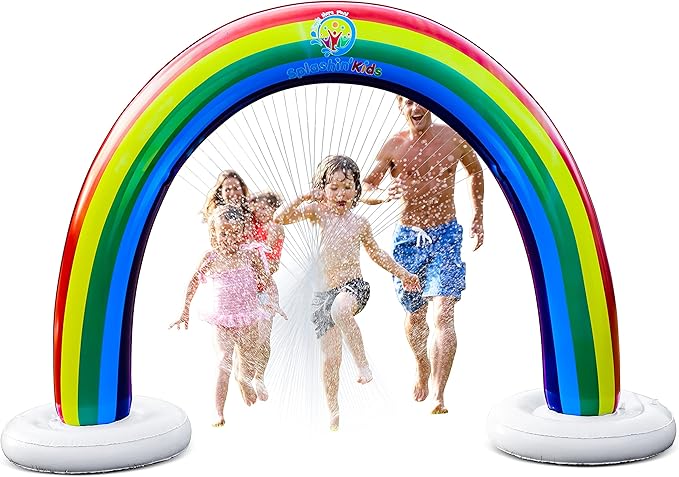
- Why It’s a Hit: Designed for summer fun, creating a rainbow effect with water spray, providing a visually appealing and enjoyable experience.
- Target Audience: Males and females, ages 18-50; interests: outdoor play, activities, summer toys.
- Marketing Angle: Highlight the visual appeal and fun factor. Use videos and photos of kids and pets enjoying the sprinkler to attract attention.

- Why It’s a Hit: Combines functionality and convenience, offering pets a way to reach higher places with additional storage space.
- Target Audience: Pet owners, particularly those with small or elderly pets.
- Marketing Angle: Focus on the multifunctionality and benefits for pets and owners. Use customer reviews and practical demonstrations in marketing.

- Why It’s a Hit: Allows users to curl their hair without the damage caused by heat-based styling tools.
- Target Audience: Females, ages 16-45; interests: beauty, hair care, fashion, health-conscious living, DIY.
- Marketing Angle: Focus on the health benefits of avoiding heat damage and the ease of use. Use before-and-after photos and testimonials from satisfied users.
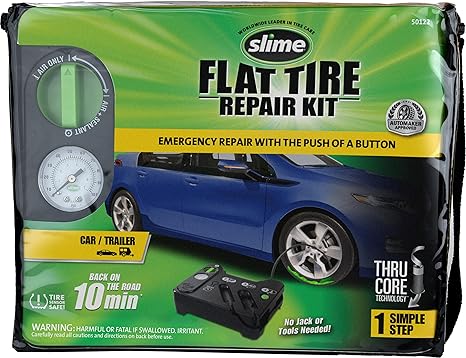
- Why It’s a Hit: Practical item addressing flat tire problems, providing a quick and easy solution for emergencies.
- Target Audience: Drivers, car enthusiasts, and outdoor adventurers.
- Marketing Angle: Emphasize safety and convenience. Show real-life scenarios where the kit can be a lifesaver.

- Why It’s a Hit: Functional and stylish, adding a touch of elegance to any room with its unique design.
- Target Audience: Males and females, ages 20-45; interests: home decor, modern aesthetics, cozy ambiance.
- Marketing Angle: Emphasize the design and quality. Use lifestyle images to show how the lamp enhances home decor.

- Why It’s a Hit: Practical for parents, especially those on the go, providing quick and safe bottle warming.
- Target Audience: New parents, baby shower gift buyers, and childcare providers.
- Marketing Angle: Emphasize ease of use, safety features, and portability. Use testimonials from parents to build trust.

- Why It’s a Hit: Must-have for pet owners during hot summer months, keeping pets cool and comfortable.
- Target Audience: Males and females, ages 25-60; interests: pet care, animal welfare, outdoor activities.
- Marketing Angle: Emphasize the comfort and health benefits for pets. Use testimonials from pet owners and cute pet images to boost appeal.
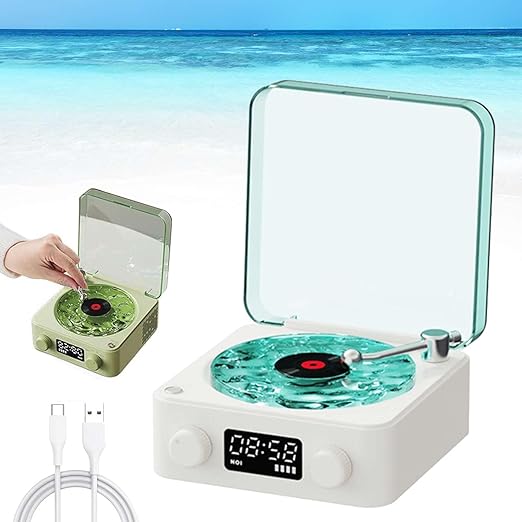
- Why It’s a Hit: Combines a galaxy projector with a vinyl player, appealing to both nostalgia for vinyl records and the modern fascination with LED lights.
- Target Audience: Music lovers, home decor enthusiasts, and those looking for unique gifts.
- Marketing Angle: Highlight the combination of vintage and modern elements, and showcase its aesthetic appeal through social media videos and photos.
How to Manage Orders and Fulfillment in Dropshipping

Managing orders and fulfillment efficiently is crucial for maintaining customer satisfaction and ensuring the smooth operation of your dropshipping business.
Let’s delve into the steps and best practices for order management and fulfillment.
Order Processing Steps
- Order Notification
When a customer places an order, you’ll receive a notification via your e-commerce platform. This step is automated, but it’s important to check notifications regularly to ensure no orders are missed.
Example: Shopify, WooCommerce, and other platforms will alert you through email or dashboard notifications when a new order is placed.
- Order Review
Review the order details to ensure everything is correct, including product specifications, shipping address, and payment confirmation.
Check for: Any special instructions or notes from the customer that need to be addressed before processing the order.
- Placing the Order with Supplier
Once the order is confirmed, place the order with your supplier. This can often be automated through your e-commerce platform if integrated with your supplier’s system.
Example: Use fulfillment apps like CJdropshipping, DSers or Zopi to automate the process of ordering from suppliers.
- Tracking and Communication
After the order is placed with the supplier, obtain a tracking number and share it with your customer. Keeping customers informed about their order status builds trust.
Example: Send an email or SMS notification to the customer with tracking details and an estimated delivery date.
Shipping and Handling
- Shipping Methods Offer various shipping options to cater to different customer needs, such as standard, expedited, and international shipping. Example: Use carriers like USPS, UPS, FedEx, or DHL to provide reliable shipping services. Ensure you have clear information on shipping times and costs.
- Packaging Ensure that your products are packaged securely to avoid damage during transit. Good packaging also enhances the unboxing experience. Example: Use bubble wrap, sturdy boxes, and branded packaging to make a positive impression.
- Customs and Duties If you’re shipping internationally, be aware of customs regulations and duties that may apply. Properly declare the value and contents of the shipment to avoid delays. Example: Include all necessary documentation and inform customers about any potential customs fees.
- Return Policy Clearly outline your return policy on your website, specifying the conditions under which returns are accepted and the process for returning items. Example: Offer a 30-day return policy for defective or unsatisfactory products. Make sure the return process is simple and straightforward for customers.
- Handling Returns When a customer requests a return, provide them with a return authorization number and instructions on how to return the item. Example: Work with your supplier to handle returns efficiently. Ensure that returned items are processed quickly and refunds or replacements are issued promptly.
- Customer Service Excellent customer service is crucial for handling returns and refunds smoothly. Be responsive and empathetic to customer concerns. Example: Use customer service platforms like Zendesk or Freshdesk to manage inquiries and support tickets effectively.
- Example: Systems like TradeGecko, Ordoro, and ShipStation can help you manage orders more efficiently.
- Example: Use tools like Zoho Inventory, DEAR Inventory, or Cin7 to manage your stock.
- Example: Tools like Shippo, ShipEasy, and Pirate Ship offer comprehensive shipping solutions.
- Low Startup Costs Unlike traditional retail models, dropshipping eliminates the need for significant upfront investment in inventory. You only purchase products when you make a sale. Benefit: Start your dropshipping store with just a website and a small marketing budget, making it accessible for new entrepreneurs.
- Reduced Risk Since you don’t have to buy inventory upfront, there’s less financial risk involved. You won’t be left with unsold stock that ties up your capital. Benefit: If a product doesn’t sell well, you can easily switch to a different product without incurring losses from unsold inventory.
- Location Independence Dropshipping allows you to run your business from anywhere with an internet connection. This flexibility makes it ideal for digital nomads and those seeking a better work-life balance. Benefit: Manage your dropshipping store while traveling or from the comfort of your home.
- Wide Product Range With dropshipping, you can offer a wide variety of products without the need to store them physically. This enables you to cater to different customer preferences and test new markets easily. Benefit: Quickly add new product categories to your store and see what resonates with your audience.
- Scalability Dropshipping businesses can scale more easily compared to traditional retail. Since you don’t handle inventory, you can focus on growing your customer base and expanding your product offerings. Benefit: As your sales increase, partner with more suppliers and add new products without worrying about storage limitations.
- Lower Profit Margins Since you’re purchasing products individually from suppliers, your profit margins are typically lower compared to bulk buying in traditional retail. Scenario: If a product costs $20 from the supplier and you sell it for $30, your profit margin is only $10, which may not cover all your expenses.
- Supplier Issues You rely on your suppliers to fulfill orders accurately and on time. Any delays or mistakes on their part can impact your customer satisfaction and business reputation. Scenario: If a supplier runs out of stock or ships the wrong item, it reflects poorly on your store even though it wasn’t your fault.
- Shipping Complexities Managing shipping logistics can be challenging, especially if you work with multiple suppliers. Different suppliers may have varying shipping times and costs, complicating the process. Scenario: An order with items from three different suppliers might arrive in three separate packages at different times, potentially confusing and frustrating the customer.
- Limited Control Over Quality Since you don’t handle the products yourself, you have limited control over their quality. This can lead to issues with defective or subpar items. Scenario: If a product doesn’t meet customer expectations due to quality issues, you may face returns and negative reviews.
- Intense Competition The low barrier to entry means many people are starting dropshipping businesses, leading to intense competition in popular niches. Scenario: Standing out in a crowded market requires unique products, effective branding, and excellent customer service.
- Choosing the Wrong Niche Pitfall: Selecting a niche that’s too broad or too competitive can make it difficult to attract customers and generate sales. Solution: Focus on a specific, underserved niche with a passionate audience. Conduct thorough market research to identify gaps and opportunities.
- Poor Supplier Management Pitfall: Relying on unreliable suppliers can lead to shipping delays, quality issues, and unhappy customers. Solution: Vet your suppliers carefully. Look for those with positive reviews, reliable shipping, and quality products. Maintain open communication and build strong relationships.
- Inadequate Marketing Pitfall: Without effective marketing, it’s challenging to attract and retain customers in a competitive market. Solution: Invest in targeted marketing strategies, including social media, influencer collaborations, and email marketing. Continuously test and refine your campaigns for better results.
- Ignoring Customer Service Pitfall: Poor customer service can lead to negative reviews, returns, and a damaged reputation. Solution: Prioritize excellent customer service. Respond promptly to inquiries, address concerns, and go above and beyond to exceed customer expectations.
- Lack of Differentiation Pitfall: Selling generic products without a unique selling proposition (USP) makes it hard to stand out. Solution: Focus on building a strong brand with a clear USP. Offer unique products, exceptional service, or added value that sets you apart from competitors.
- Not Checking Shipping Times: Failing to verify shipping times can lead to customer dissatisfaction and high return rates. Solution: Always check shipping times for different countries and choose suppliers who offer reasonable delivery times.
- Setting Unrealistic Goals: Expecting overnight success can lead to frustration and disappointment. Solution: Set realistic, achievable goals and understand that building a successful business takes time and effort.
- Starting with a Low Budget: A very low budget can limit your ability to test products and scale your business. Solution: Save up a sufficient budget to invest in product testing, marketing, and other essential expenses.
- Choosing the Wrong Products: Selling products that don’t resonate with your target audience can result in low sales. Solution: Conduct thorough product research and choose items that solve problems, have high demand, and offer good profit margins.
- Avoiding General Stores: Starting with a general store can be overwhelming and ineffective. Solution: Focus on a niche store or a one-product store to concentrate your efforts and build a strong brand presence.
- Ignoring Copyright and Trademarked Products: Selling counterfeit or trademarked products can lead to legal issues and account suspension. Solution: Ensure that the products you sell are genuine and comply with copyright and trademark laws.
- Tracking Profits Inaccurately: Failing to track profits accurately can lead to financial mismanagement. Solution: Use tools like Lifetimely or OrderMetrics to monitor your profits in real-time and make informed business decisions.
- Using Debit Cards for Ads: Using debit cards for ad payments can limit your cash flow. Solution: Use credit cards that offer rewards and cashback for marketing expenses to optimize your budget.
- Not Setting Up a Legal Business Entity: Operating without a legal business entity can expose you to personal liability and tax issues. Solution: Consult with a local CPA to set up the appropriate business structure, such as an LLC or S-Corp.
- Neglecting Bookkeeping: Poor bookkeeping can lead to financial issues and tax problems. Solution: Use accounting softwares to keep your books up-to-date and consult a tax professional for proper tax planning.
Managing Returns and Refunds
Tools for Efficient Order Management
Order Management Systems (OMS)
An OMS helps streamline the entire order fulfillment process, from order placement to delivery. It integrates with your e-commerce platform and supplier systems.
Inventory Management Software
Keep track of your inventory levels to avoid stockouts and overselling. Inventory management software can automate this process and provide real-time updates.
Shipping Software
Shipping software helps you compare rates, print shipping labels, and track shipments. It can save you time and reduce shipping costs.
Why is Dropshipping Good?
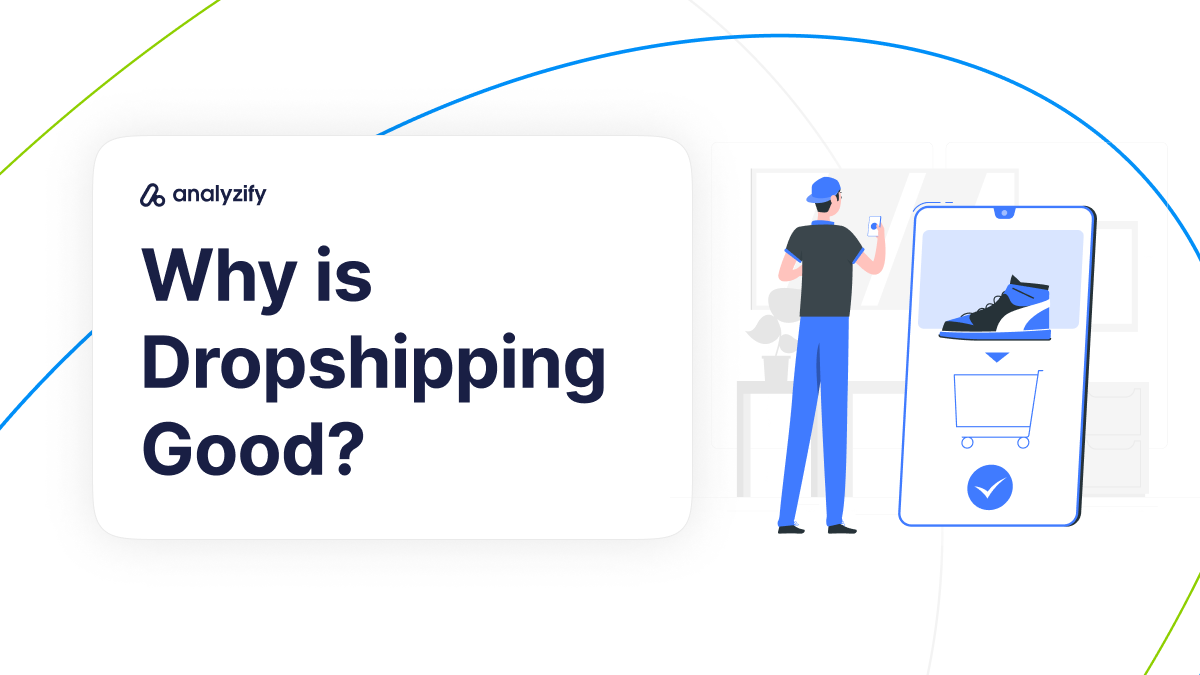
Dropshipping has become a popular business model for many entrepreneurs, and for good reason. Let’s explore the advantages of dropshipping and highlight some success stories that demonstrate its potential.
Advantages of Dropshipping
Why is Dropshipping Bad?
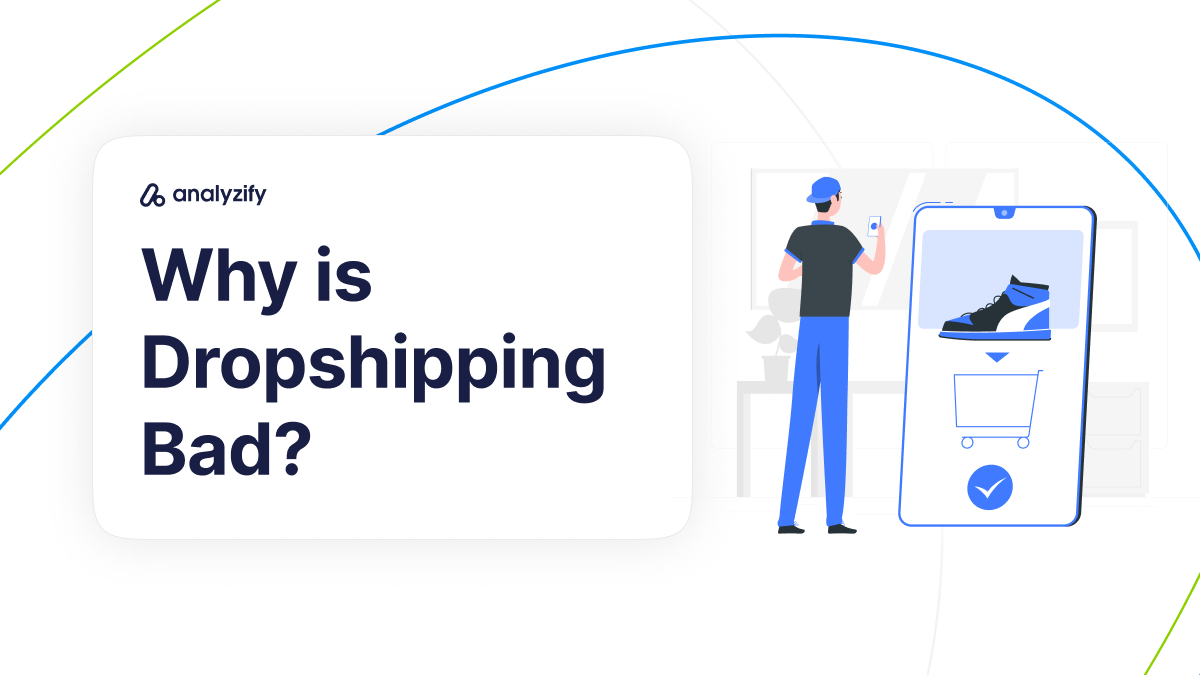
While dropshipping has many advantages, it’s important to be aware of its challenges and potential pitfalls. Let’s explore the disadvantages of dropshipping and how to navigate them.
Disadvantages and Challenges
Common Pitfalls and How to Avoid Them

What Are The Most Common Mistakes in Dropshipping?
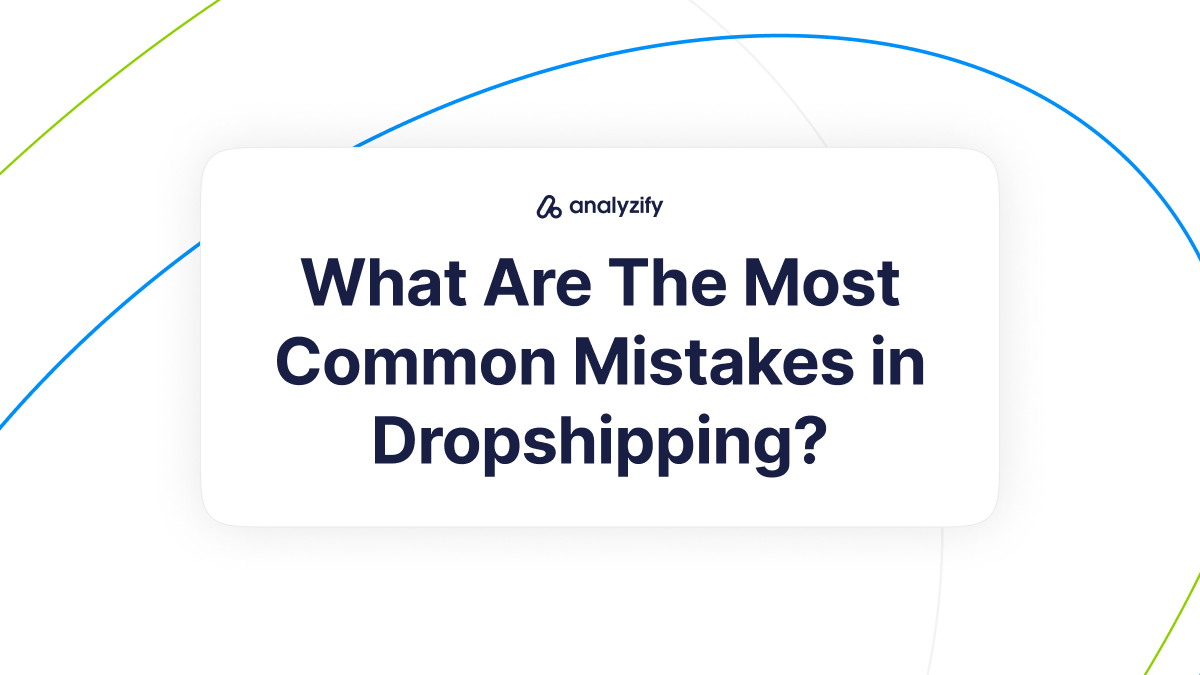
Starting a dropshipping business comes with its own set of challenges and potential pitfalls. Let’s explore the top 10 mistakes to avoid and how to overcome them.
FAQs About Dropshipping

Dropshipping is a popular business model, but it comes with its own set of questions and concerns. Here are some frequently asked questions about dropshipping to help you better understand the ins and outs of this business.
Is Dropshipping Legal and Legitimate?
Yes, dropshipping is a legal and legitimate business model. Many entrepreneurs use dropshipping to run successful e-commerce stores. However, it’s important to work with reputable suppliers and sell genuine products to avoid any legal issues.
Do You Need a Seller’s Permit and a Business License?
The requirements for a seller’s permit and a business license vary by country and state. Generally, you will need a seller’s permit to collect sales tax and a business license to operate legally. It’s best to check with your local government to ensure you comply with all regulations.
How Profitable is Dropshipping?
The profitability of a dropshipping business depends on various factors, including your niche, marketing strategy, and operational efficiency. While dropshipping can be profitable, it’s important to manage your costs, choose the right products, and effectively market your store.
Can You Dropship on Amazon and eBay?
Yes, you can dropship on platforms like Amazon and eBay. However, these platforms have specific rules and guidelines for dropshipping. Make sure you understand and comply with their policies to avoid account suspension.
How Do Payments Work in Dropshipping?
When a customer places an order on your store, they pay you the retail price. You then purchase the product from your supplier at the wholesale price and keep the difference as profit. Payment gateways like PayPal, Stripe, and Shopify Payments can facilitate these transactions.
Where to Find Dropshipping Suppliers?
You can find dropshipping suppliers on platforms like AliExpress, Oberlo, Spocket, and SaleHoo. It’s important to vet your suppliers carefully to ensure they offer reliable shipping, good product quality, and excellent customer service.
Who Pays for Shipping?
The customer usually pays for shipping. You can either include the shipping cost in the product price and offer “free shipping” or charge a separate shipping fee. Offering free shipping can be an effective marketing strategy to attract more customers.
Do Dropshippers Ship Internationally?
Yes, many dropshippers ship internationally. However, international shipping can be more complex and expensive. Make sure you understand the shipping costs, delivery times, and customs regulations for the countries you plan to ship to.
Can You Use Multiple Dropship Suppliers?
Yes, you can use multiple dropship suppliers to diversify your product range and reduce dependency on a single supplier. This can also help you manage inventory better and avoid stockouts. However, managing multiple suppliers requires good coordination to ensure smooth order fulfillment.
How to Handle Returns and Refunds?
Returns and refunds in dropshipping can be challenging because you don’t handle the products directly. It’s important to have a clear return policy and work closely with your suppliers to manage returns efficiently. Ensure your customers understand the process and provide excellent customer service to handle any issues.

































